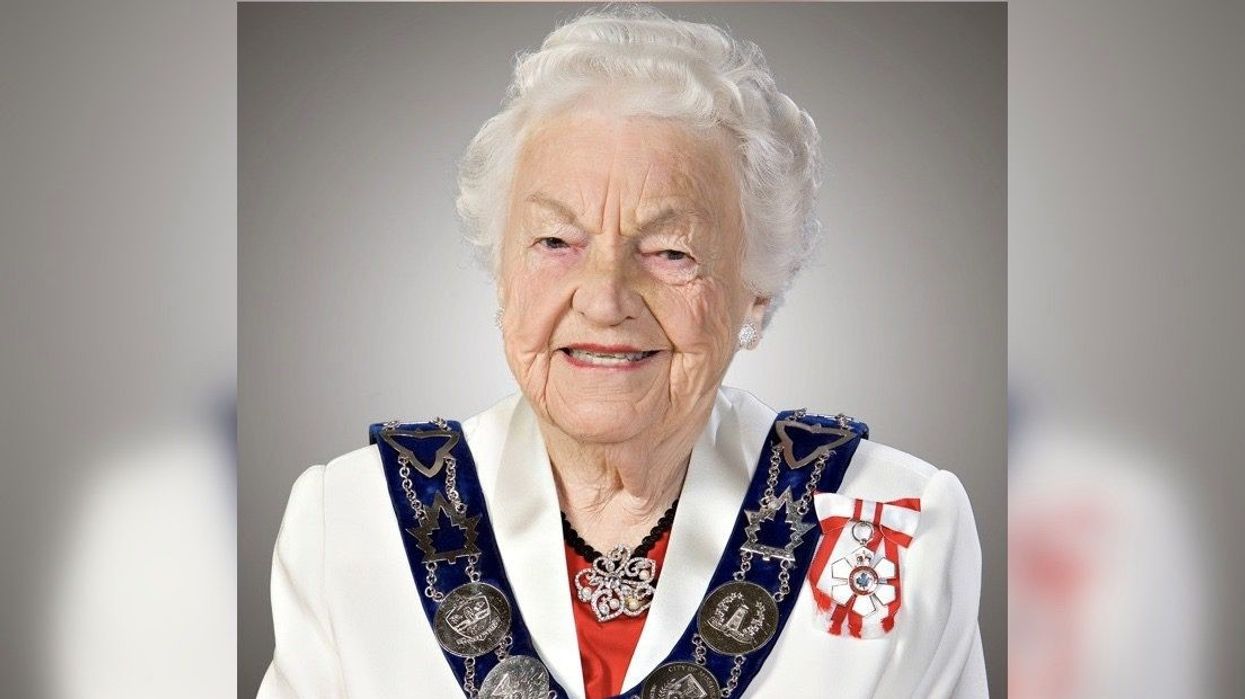The death of Hazel McCallion last week at the age of 101 came as a shock to her army of admirers, many of whom believed she would live forever. Alas, we must all shuffle off this mortal coil, but by any measure, hanging on for more than a century is no mean feat.
Mississauga’s longest-serving mayor, McCallion was first elected in 1978 and remained at the helm until she retired in 2014. By then she was 93 and had been in office for an astounding 36 years. During her tenure as chief magistrate she presided over the transformation of a newly minted bedroom community west of Toronto into Canada’s sixth-largest city, with a population of 720,000.
“On my first day as mayor,” she told Mississauga Council on her last, “cows and horses were grazing in what is our city core today...”
Perhaps “city” is not quite the right word. McCallion’s approach to city-building was based squarely on the received wisdom of the time. That meant the automobile was at the heart of all decisions related to growth. Inexorably, Mississauga became a sprawling network of old towns and new subdivisions connected by a system of highways, arterials, parking lots, driveways and malls. It was a community built in reverse, possibly the first “city” in Canada built and organized around a shopping centre. Started in 1969, Square One opened in 1973, a year before Mississauga was incorporated. The current city hall wouldn’t be completed until 1987. Mississauga’s first designated civic space, Celebration Square, opened in 2011.
From a 21st-century vantage point, however, the planning ideas that guided McCallion have been largely discredited. Except for politicians such as McCallion’s friend and ally, Ontario Premier Doug Ford, most leaders have moved on to a more nuanced understanding of growth. Certainly, the climate crisis is forcing even the most unenlightened officials -- again, except Ford and his Conservative Party -- to re-examine the assumptions that led to the uncontrolled sprawl that has left much of Southern Ontario’s most arable farmland buried beneath layers of concrete and asphalt.
READ: Largest Mixed-Use Development in Canadian History Announced for Mississauga
At a time when thousands of Ontarians are battling Queen’s Park’s plan to open 7,400 acres of the Greenbelt to Tory-friendly builders, images of “cows and horses grazing” have acquired new meaning. But for McCallion’s generation, undeveloped land was empty space waiting to be filled. Just weeks before her death, she was very publicly supporting Ford’s ruinous Greenbelt schemes, proof, if any were needed, that Her Worship never changed her spots.
McCallion’s most significant departure came when she awakened to the desperate need for public transit. By then she was in her tenth mayoral term. When it started in 2007, congestion had become a huge issue and global warming could no longer be ignored. Studies suggested than gridlock was costing the regional economy $6 billion annually.
“Transit is our major priority at this point,” she said in an interview one year before she retired. “Because of all the economic development we have, it’s very important that we have transit to get people to and from work…. Even in Toronto they don’t have an adequate transit system for the growth that has occurred. If they don’t have an adequate [transit system], you can imagine that we don’t have an adequate transit system.”
McCallion’s dedication to keeping property tax low also had results she came to regret. Everything was fine during the halcyon decades of cheap land, cheap gas, and cheap housing. Development fees meant growth paid for itself. It also allowed Mississauga to avoid tax hikes. But when the era of what the late Metropolitan Toronto Chair Fred Gardiner called “multiplication by subdivision” drew to a close, Mississauga suddenly faced a new reality. In 2013, a year before McCallion retired, the burg that always paid its way had spent its savings and was forced to borrow money -- $700 million – for the first time in its history.
As we all know only too well, hindsight is 20/20. McCallion’s Mississauga fell into the time-honoured trap. The city’s financial woes are the usual ones. To make matters worse, the cost of much-needed transit, like so much civic infrastructure, has soared in recent years. It’s no surprise that the overwhelming question for McCallion’s successor, Bonnie Crombie, is whether Mississauga can afford to become the city it so wants to be.
READ: The New Mississauga Embraces its Big City Urbanization
For Mississauga, the price of McCallion’s longevity was steep. Not only were generations of potential leaders and ideas sidelined, participation in the political process was disturbingly low. Voter turnout rarely exceeded 30%. In 2003, only 83,241 of 416,456 eligible Mississaugans bothered to cast a ballot. That same election, McCallion received 74,719 votes, more than 90% of mayoral votes.
Clearly, McCallion’s success led to a level of indifference that seriously undermines the credibility of democracy itself. Presumably, most Mississaugans assumed that McCallion would win regardless and were content to leave it at that. In fact, twice she ran unopposed. To her eternal credit, however, she rarely campaigned -- it wasn’t necessary -- and refused to accept donations.
On the other hand, twice she survived conflict of interest allegations that would have ended more conventional political careers. But Mississaugans also never forgot the cool with which she handled the infamous 1979 derailment of a train carrying deadly chlorine gas. Not only were fatalities averted, 200,000 people were evacuated without incident.
A woman of more than a few nicknames, she was Hurricane Hazel as well as the Queen of Sprawl, both monikers equally well earned. Unsurprisingly, her legacy is decidedly mixed. For better or worse, she was a leader who did what she thought was right -- even when it wasn’t. History has been kind to McCallion, but how long that lasts remains to be seen.





















